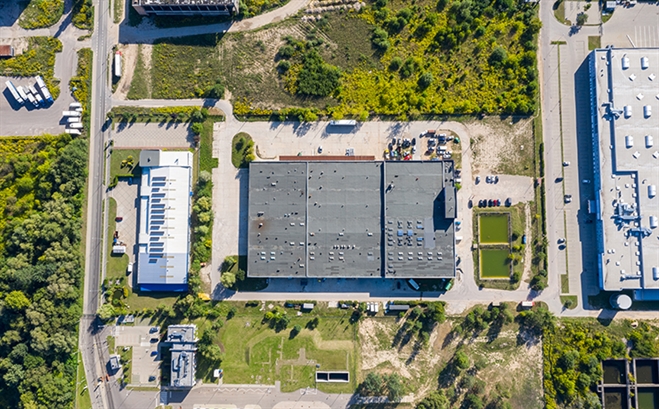Key Connections: Assessment & Recording
April 05, 2021 by Mashal Babak

The power of connections and shared data is all around us. Look around your living room, for example, and you may see an Amazon Alexa or similar device. These form seamless connections with other things throughout your home, such as your thermostat, lighting, and door locks, to give you more control over your home with just the sound of your voice. Sure, each thing works well on its own, but when connected, you gain new efficiencies and make your life easier.
Creating seamless connections is important in government, too. When governments have connected systems, streamlined, digital processes can work to eliminate burdensome silos and make employees’ lives easier. The public also benefits from digital connections. These useful connections enable individuals to search for information or conduct business with a department from any device at any time. In a connected government, for example, when someone files a building permit, that action automatically triggers a building inspection, which automatically triggers an appraisal. The constituent benefits from a speedy process, and internal staff are spared manual processes that can result in backlogs or errors.
Assessment and Recording Offices
A unique area of connection, or integration, can be found between recording and assessment offices. While these offices often function quietly in the background, their work significantly impacts community residents.
As noted in The Value of Land Records and Recording, recording offices maintain and make accessible deeds and other real estate documents. These records verify home ownership, making it possible for individuals to purchase land and be assured of a clear title, obtain title insurance, or borrow money from a lender. Absence of these critical records can lead to disputes and challenges around property ownership.
Assessment offices, typically guided by the county assessor, determine the value of properties for local real estate tax purposes. The figures assessors derive are, in general, estimates of the real property value within a jurisdiction’s boundaries, and these figures are used to calculate property taxes. These taxes fund essential community services including public safety, quality education, road maintenance, senior services, parks and recreational opportunities, and more.
Better Together
These two offices can work together in many ways that benefit all stakeholders whom their functionalities touch. In Lancaster County, Nebraska, Chief Administrative Deputy Scott Gaines streamlined deed processing by bringing the two together, specifically by connecting the recording office’s records management system with the county’s appraisal, tax, and collections software. “This results in a more efficient and trackable process,” Gaines noted. “It eliminates the passing of hard copy documents (and the risk of lost documents) and reduces unnecessary duplication of data entry in two separate systems.” And, any time duplicate work is removed, counties and taxpayers alike save money.
Removing barriers between assessment and recording offices helps constituents in other significant and visible ways. When data is shared between both offices, the public benefits from better, more dependable online searches, increasing their trust in the offices and related processes. When parcel numbers are shared between offices, for example, residents can search by parcel number across both offices, increasing public access to information in a way that empowers individuals through convenient self-service. GIS views of properties can also be shared for easy public access.
These benefits are facilitated by integrated foundational technology. When business systems seamlessly connect, pain points are resolved. Following are two common examples in more detail.
Parcel Query and Validation
Documents presented for recording typically describe parcels by current ownership, legal description, and sometimes parcel number. At a property’s transfer from one owner to another, certain circumstances should prevent a transfer document from being recorded. Those scenarios are captured on the assessor’s side, and can include unpaid property taxes, outstanding county liens, or invalid ownership or legal description on the document. If any of these is not caught before a transfer is recorded, legal issues with the parcel can arise that could prevent the sale or recording immediately, or surface down the road.
When recording and assessing software and data are integrated, recording offices can run a query through the assessor’s system by legal description or parcel number. The query returns matching results and allows the recorder to view and select a result, validate the document can be recorded, and automatically copy the owner, legal description, and parcel number into the recording software. The document is therefore recorded with current, validated information. This eliminates duplicate manual queries in each system, automates the data entry process, and connects the parcel number to the document as soon as the document is recorded. More timely transfer of ownership for more accurate and timely assessment notices provides downstream consumers with more accurate parcel information. Ownership validation through data-sharing also helps combat fraudulent recording.
Document Updates
Certain documents in the recording process create new parcel numbers that are not immediately available. When a property transfer splits or combines parcels, for example, resulting new numbers may not be available until much later in the process. Issues arise when the recording office doesn’t get those new numbers back, resulting in an incomplete view of a parcel’s history.
Integrations between offices can solve this, for example, through software that allows the appraisal office to send new parcel numbers to the records management solution. On the records side, the system automatically updates the recorded document.
The bottom line of these and other integrations is seamless sharing of information across offices. This sharing reduces manual data entry and resulting errors, saves time, saves money, eliminates paper, and provides all stakeholders with quicker access to up-to-date information. Connections that create these efficiencies and better serve staff and citizens alike are also key components to fully connected, stronger communities.